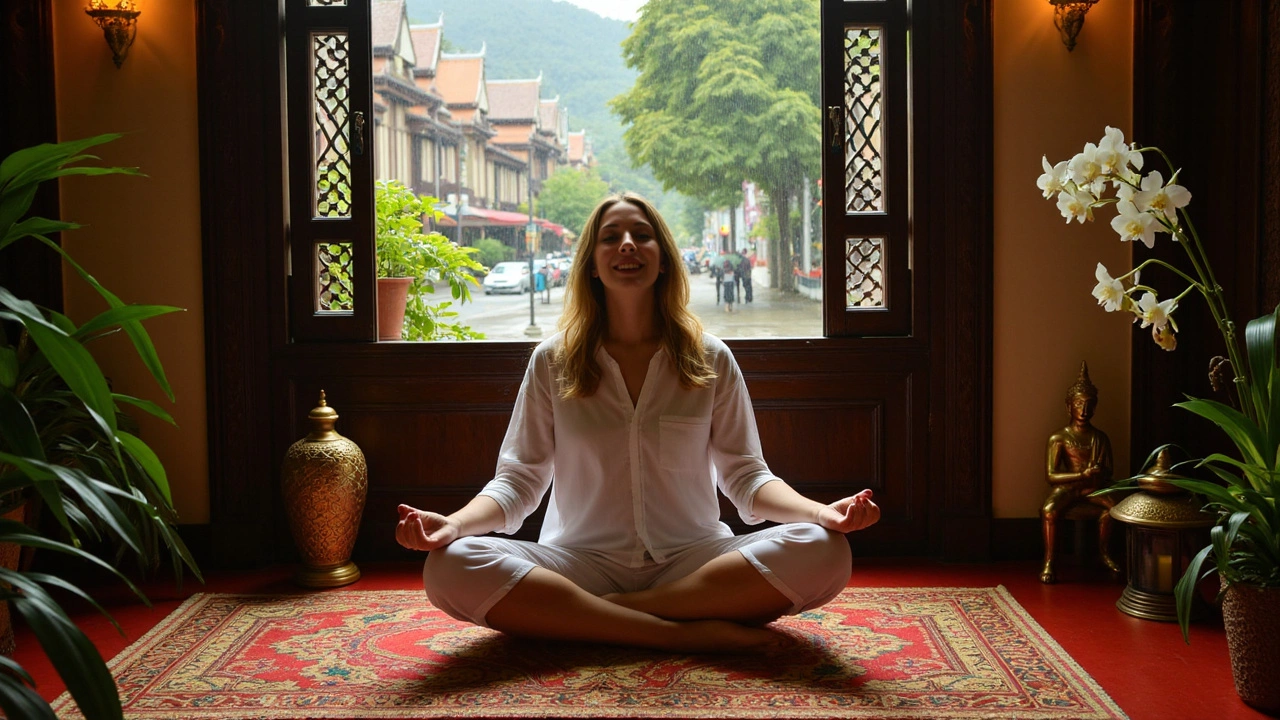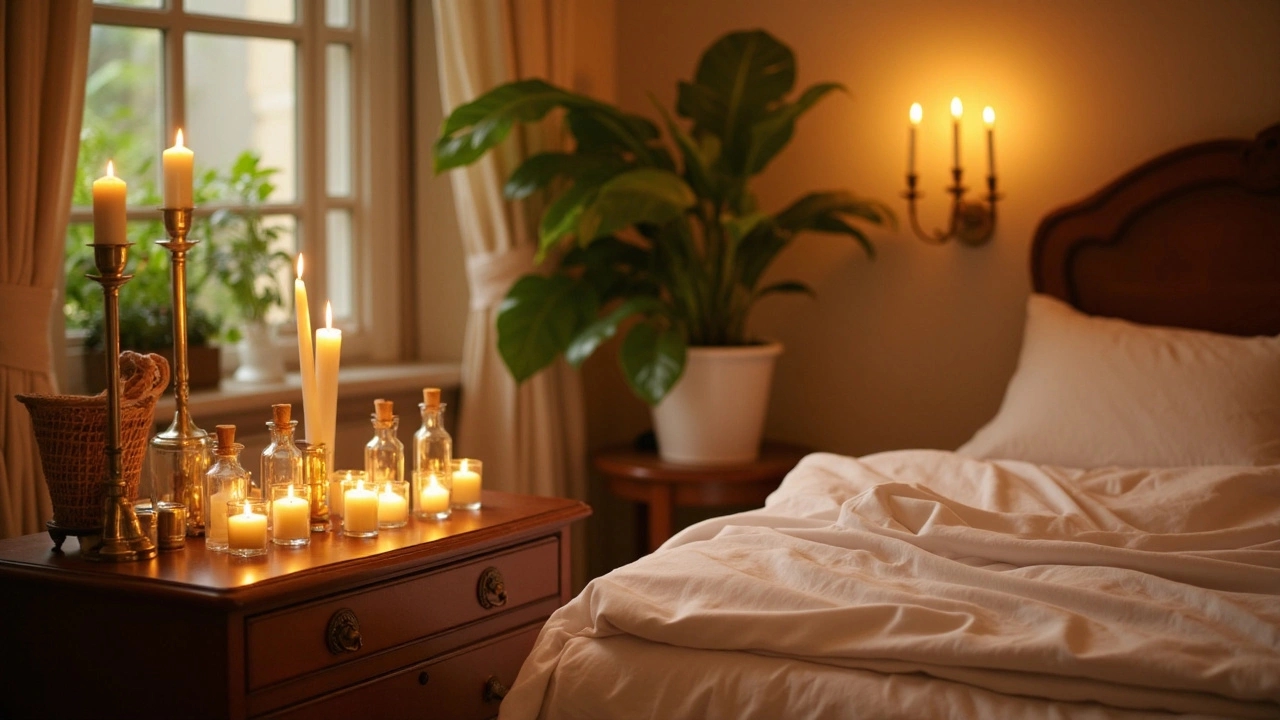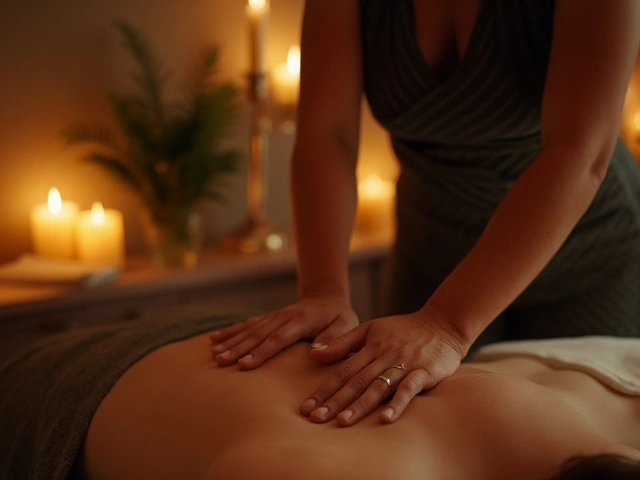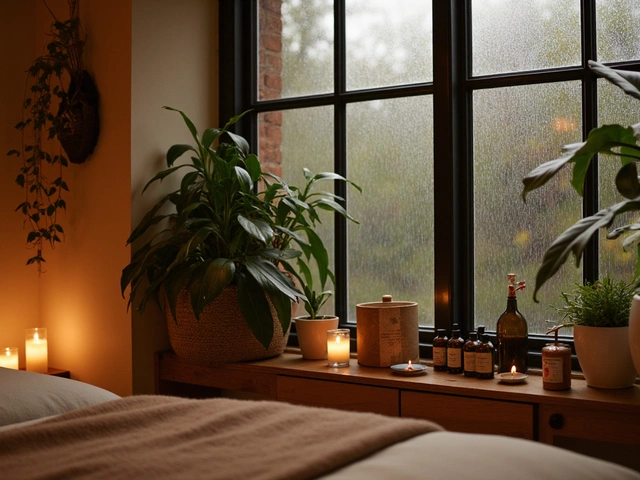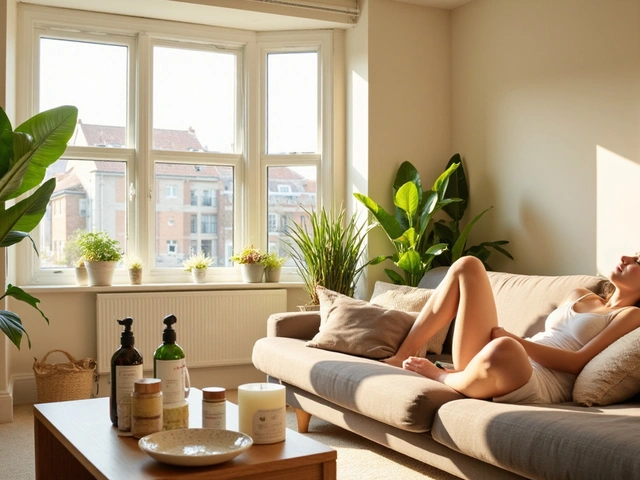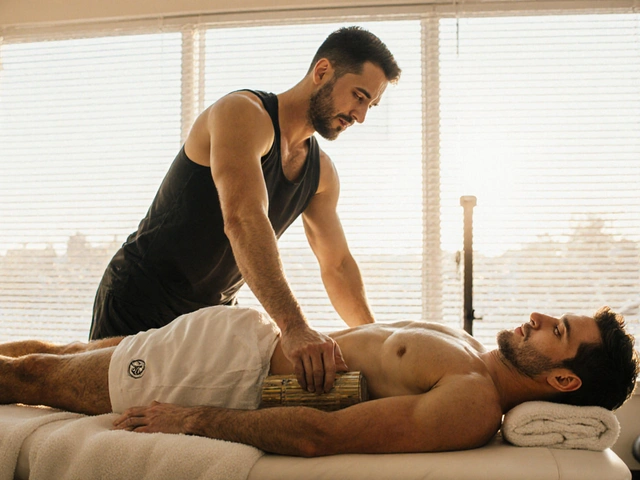Ever wish you had a reset button for your energy? Thai massage comes pretty close. If you’re dragging through the afternoon or waking up more tired than when you went to bed, these hands-on techniques can help you shake off that sluggish feeling. Here’s the straight-up way Thai massage works: it's all about stretching, gentle pressure, and moving your body in ways that open you up and bring fresh energy back.
Unlike most massages, you don’t just lie there and zone out. A Thai massage might have you twisting, pulling, and rocking, but in a good way. All this movement gets your blood flowing and helps your body wake up. People swear they leave feeling lighter, looser, and way more awake—even if they went in like a zombie.
The best part? You don’t have to be a yoga pro or super flexible to feel the results. Even if the idea of stretching makes you wince, the therapist does the work, guiding your limbs and using techniques passed down for generations. These moves aren’t random either—they’re designed to tap into your body’s energy lines (think of it like jump-starting your internal battery).
- Direct Answer & Key Points
- How Thai Massage Energizes You
- Key Thai Massage Techniques for Energy
- Finding the Right Place Near You
- Safety and Booking Tips
Direct Answer & Key Points
Looking for a legit way to boost your energy without relying on coffee or energy drinks? Thai massage uses a mix of stretches, pressure, and movement to get your blood pumping and help your whole body feel more awake. The foundation of this technique goes way back in Thai culture, focusing on moving energy through the body in a natural and steady way. Research published in the International Journal of Therapeutic Massage and Bodywork found that just sixty minutes of Thai massage can improve alertness and reduce fatigue—no magic required.
- Thai massage targets energy channels called “sen” lines, which are believed to spark vitality throughout your system.
- It uses dynamic stretching and gentle pressure, making it different from just rubbing sore muscles.
- People often feel more energized for several days after a session—there’s real staying power here.
- No experience needed; it works for people of all fitness levels, from desk workers to athletes.
- Common feedback includes better concentration, lighter mood, and less afternoon tiredness.
Want a quick comparison? Here’s how Thai massage measures up against your other go-to solutions:
| Energy Booster | How Fast It Works | How Long It Lasts | Boosts Mood? |
|---|---|---|---|
| Thai Massage | Within 30-60 min | Several days | Yes |
| Coffee | 10-30 min | 2-4 hours | Sometimes |
| Energy Drink | 15-40 min | 3-6 hours | Briefly |
The takeaway? If you want something that truly resets your energy (not just a quick fix), Thai massage beats chugging another latte any day.
How Thai Massage Energizes You
Let’s get real: most of us just want to feel awake and ready to tackle the day. Thai massage has this reputation for giving people a serious boost, but what’s actually going on under the hood?
At its core, Thai massage is all about mix-and-match techniques—stretching, acupressure, and rhythmic pressing. Together, these moves trigger your body’s natural energy pathways (sometimes called “Sen lines” in Thailand). When these pathways get nudged with pressure, it can help break up stuffiness and get energy flowing again. Kind of like un-kinking a garden hose. This matters because when your body’s energy isn’t moving right, you feel it: low mojo, tense muscles, foggy brain.
What really sets Thai massage apart is how hands-on and active it is. Instead of sinking into a massage table, you usually lie on a floor mat, staying fully dressed in comfy clothes. The therapist stretches your arms and legs, moves your body in gentle twists, and presses on certain points. This constant moving and holding means your circulation speeds up, oxygen flows better, and your muscles get more of what they need to release built-up tension.
Here’s why this is a game-changer for your energy:
- Thai massage stimulates blood flow, so oxygen and nutrients move faster through your body.
- It pushes your lymphatic system into action, helping clear out waste that can leave you feeling sluggish.
- By opening joints and lengthening muscles, it boosts mobility—so you walk out feeling springier, not sore.
- The pressure on energy points often gives a “wake up” effect, similar to what a good workout does (without breaking a sweat).
I’ve seen folks, even after their first session, sit up looking a bit stunned in a good way—amazed at how wide awake they suddenly felt. A study at Mahidol University in Bangkok found that people who got a single session reported feeling less tired and more alert for hours afterward. So this isn’t just hype: the science backs it up too.
The best part is, this boost doesn’t come from magic or wishful thinking. It’s just your body responding to pressure, movement, and better flow—the stuff it’s made to do.
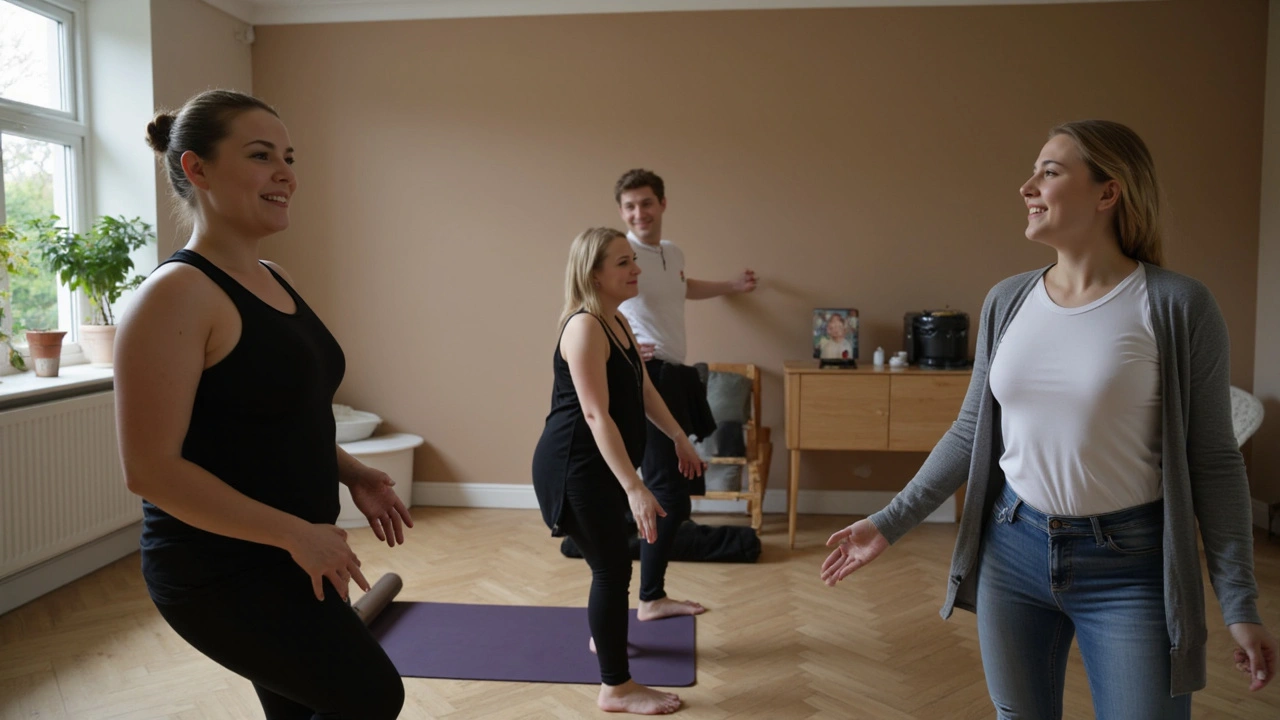
Key Thai Massage Techniques for Energy
When it comes to getting your energy levels back on track, some Thai massage moves stand out more than others. These aren’t just your average back rub techniques—these are special routines built around pressing, stretching, and moving your body in ways that get you firing on all cylinders. Here’s a look at some of the most useful techniques you’ll find in an energizing Thai massage session.
- Sen Line Thumb Pressure: This classic Thai technique focuses on 'Sen' or energy lines, much like acupuncture points but with hands and thumbs. Therapists use their thumbs to apply firm, steady pressure along these lines, often running from your feet up to your head. People say this feels like someone unclogging their body’s internal pipes, giving energy a clear path.
- Assisted Yoga Stretches: Ever see those pictures of someone getting twisted like a pretzel during a Thai massage? Those stretches are real, but they’re gentler than they look. The therapist moves your arms, legs, and back into stretches that open your body up and take pressure off tight spots. For most folks, these moves are what turn sluggishness into a sort of natural buzz.
- Rhythmic Palm Pressing: The therapist will sometimes use flat palms, not just fingers or thumbs. They move in a rocking, wave-like motion, especially down your back and legs. This technique gets the blood flowing, wakes up tired muscles, and helps you feel more present and alert.
- Foot Reflexology: Thai foot massage isn’t just about relaxation—it’s energizing. Therapists will work the bottoms of your feet in small circles and lines, aiming to wake up nerve endings and reconnect you with the ground. Some Thai spas even use a wooden stick for extra pressure.
- Spinal Twist and Roll: Near the end of a session, you might get a gentle twist or roll through your back and shoulders. Back tension is a huge energy drain, and this quick move can sometimes make you feel like you just stretched after a five-hour road trip.
Check out this quick table that breaks down which technique is best for each energy-boosting need:
| Technique | What It Targets | How It Feels | Best For |
|---|---|---|---|
| Sen Line Thumb Pressure | Key body energy pathways | Firm, steady, sometimes a bit intense | Clearing sluggishness, tension relief |
| Assisted Yoga Stretches | Joints, muscle tightness, posture | Deep stretches, but supported | Morning or post-workout energy slumps |
| Rhythmic Palm Pressing | Large muscle groups, circulation | Smooth, rocking, relaxing | Afternoon pick-me-up |
| Foot Reflexology | Reflex zones, nerve endings | Focused, sometimes tingly | Jet lag, tired legs, all-day fatigue |
| Spinal Twist and Roll | Spinal mobility, back tension | Quick release, sudden lightness | Midday reset |
If you want a real boost, ask your therapist to focus on techniques that wake up your system. And remember, a good Thai massage session will usually combine two or three of these moves, not just stick to one. If you feel wiped out sometimes after a session, it’s normal—think of it like the tired-but-good sensation after a workout. Most people notice a spike in energy a few hours later or the next morning.
Finding the Right Place Near You
Picking the right spot for a Thai massage can make or break your whole experience. Not every massage shop on the corner knows what they’re doing, so you’ve got to do a quick check before booking. Start online: reviews on Google or Yelp are gold. If a place has loads of five stars and real feedback (not just short “great service” lines), that’s a good sign.
If you’re in a big city like London, New York, or Sydney, you’ll find plenty of options, but look for licensed therapists and spots that mention traditional training—ideally, certified by the Wat Pho Thai Traditional Medical School or similar. Those places don’t just make things up; they stick to the real deal.
Ask these questions or scan websites before you book:
- What kind of Thai massage do they offer? Some places only do foot or shoulder sessions.
- How long have their therapists been practicing?
- Can you see credentials or certifications if you ask?
- Is the space clean, and do they have private rooms or open layouts?
- What’s the vibe? Friendly, relaxed, and professional signals a good environment.
Pro tip: Many well-known wellness chains like Thai Square Spa in London, Sabai Thai in Vancouver, and Nuad Thai in Los Angeles offer both authentic and tailored experiences. These names come up over and over in reviews for good reason.
Want to narrow it down? Here’s what folks find most helpful to check when picking a spot:
| Factor | Why It Matters |
|---|---|
| Therapist Credentials | More certified therapists means safer, more effective sessions |
| Client Reviews | Honest feedback tells you what’s good and what’s not |
| Cleanliness | Clean spots protect you from germs and help you relax |
| Price Transparency | No surprise costs—everything is clear upfront |
| Range of Services | Lets you pick the session that fits your needs |
If you’ve got friends or coworkers who’ve had good experiences, get recommendations from them, too. Word of mouth is hard to beat. Lastly, don’t be afraid to call ahead and ask questions, especially if you want something specific like a deep-stretch Thai classic for boosting your energy. A little homework pays off when you walk out feeling recharged rather than ripped off.
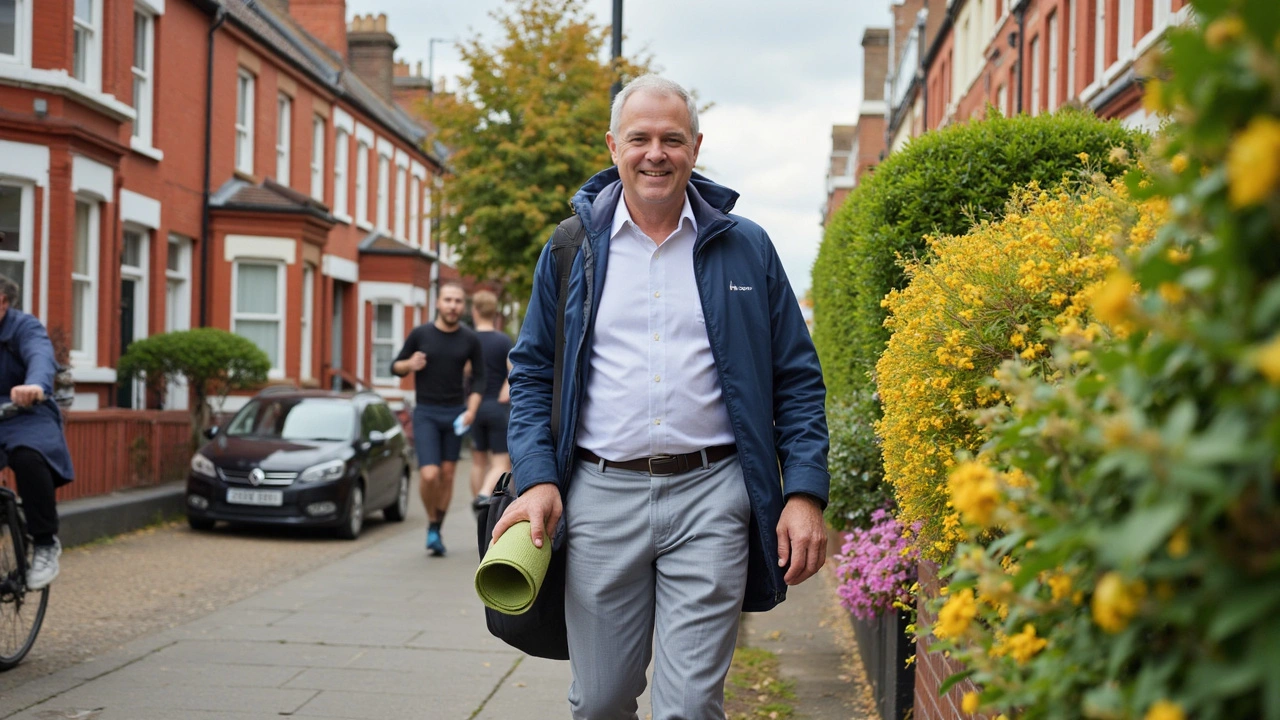
Safety and Booking Tips
Booking a Thai massage isn’t rocket science, but a little bit of know-how can help you skip common headaches and have a way better experience. Start by checking that the place or therapist is legit—look for clear reviews online, not just a handful from two years ago. Lots of five-star ratings with recent comments about cleanliness and comfort usually mean you’re on the right track.
When it comes to safety, always make sure your therapist is certified. In Thailand, massage therapists go through hundreds of hours of training at places like Wat Pho or Thai Traditional Medical Services Society. If you’re not in Thailand, ask about their credentials. Most good spas will proudly display qualifications, and if they dodge the question, that’s a major red flag.
You should also tell your therapist about any injuries, recent surgeries, or chronic pain before you start the session. This info helps them tailor the massage so you get the most out of it without risking more pain later. If you’ve got specific needs, ask what styles or adjustments they can offer—there’s no shame in being clear with your health.
For booking, lots of places let you schedule online. Avoid super-cheap spots that offer deep discounts all the time; this usually means less experience or shortcuts you really don’t want. If you’re booking for the first time, call ahead to ask what you need to bring or what to expect. Some spots provide loose clothes, while others want you to wear your own athletic gear.
Lastly, trust your gut. If you walk in and the place looks messy or something feels off, it’s totally fine to bail and find somewhere that feels comfortable and safe. You’re there to relax and recharge, not add stress.

